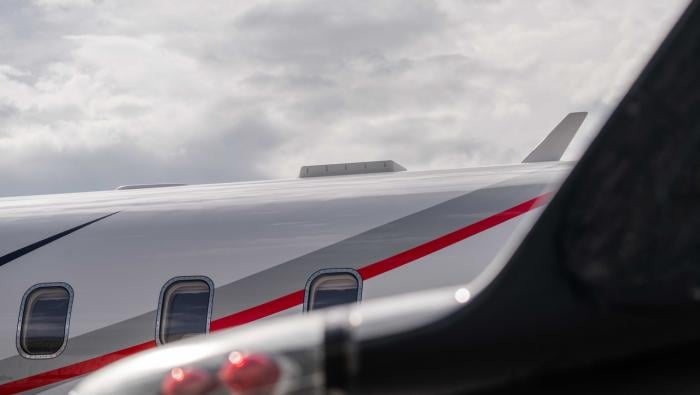One year after beginning construction at its new maintenance facility, Táxi Aéreo Marília (TAM) has begun operations at its Jundiaí center, which will allow the company to handle 120 aircraft per month, double the number it services at its Congonhas facility. The new center briefly wears the crown as the largest business aviation maintenance facility in the world until Cessna inaugurates its new facility in Wichita this month.
TAM has invested nearly $8.5 million (24 million Brazilian reals) in the new center, which will give the company more space and flexibility to service a wider range of aircraft and to increase its client base.
The new facility is 581,251 sq ft and has an 87,187-sq-ft hangar, a 97,951-sq-ft administrative center and a 19,375-sq-ft paint bay. Given the current rates of growth, the company expects to invest an additional $2.12 million in 2006 to build a new 87,187-sq-ft hangar. By 2009, TAM plans to be able to increase the number of airplanes it services to 180 per month.
“With current economic growth in Brazil, we expect business aviation will also increase significantly. More and more companies are showing interest in acquiring aircraft, because they see them as essential business tools,” said Rui Aquino, president of TAM.
More Services at Jundiaí
Aquino believes that in addition to doubling the company’s hangar space, the move will facilitate pick-ups and drop-offs because the Jundiaí airport operates 24 hours a day. Until recently there had been a limited number of slots for takeoffs and landings at Congonhas, one of Brazil’s busiest airports.
Furthermore, the company didn’t have room to grow. “At the São Paulo Congonhas airport, we had a hard time serving our existing clients because of lack of space,” said Aquino. “With the new center we will have the capacity to meet the growing demand for business aviation services in Brazil,” he added.
For example, the airport management service, Infraero, restricted engine test runs because of limited space. Similarly, the company could not perform compass swings at Congonhas. “We were required to go to a nearby airport to perform the compass tests, which significantly increased the cost of [an inexpensive] operation,” said Aquino. The company also struggled to schedule test flights. “Traffic at Congonhas will continue to become more congested and will become a more serious problem in the future,” he predicted.
Initially, TAM was concerned that its clients would be reluctant to maintain their aircraft outside São Paulo, but so far customers have found the service more convenient, said TAM. The company offers regular shuttle service to and from São Paulo and many clients opt to take advantage of the airport’s heliport to return to São Paulo. The Jundiaí airport is run by the state Department of Transportation, rather than Infraero, and the DOT has lowered landing fees significantly. “Clients understand that they will have better services and are already noting significant improvements,” Aquino added.
With the new facilities, TAM expects to double its current annual revenues of $11.66 million by 2009. The company will also be able to serve many aircraft that it did not have the room to service at Congonhas. Currently, TAM provides service for 70 percent of Brazil’s 3,330 Cessnas. With the increased space, TAM expects to increase that number to roughly 85 percent.
“We also hope to provide service for 100 percent of Brazil’s 144 Citations by 2007, as well as an additional 100 Caravans,” Aquino added. TAM will also have room to provide service for the 30 new Citations that will begin operating in Brazil over the next three years.
TAM expects to receive certification to service Raytheon’s Beech King Air line by the end of the year. “We have already signed contracts to service 54 King Airs, aircraft that we previously did not handle,” said Aquino.
With the strengthened infrastructure, TAM expects to increase the number of international clients it serves. TAM anticipates maintaining all of Chile’s fleet of Citations and 80 percent of the Argentine fleet in the short term. While basic work will still be done in the country of origin, TAM’s new facilities will be able to perform more complex operations. “We will have the technical capability to provide services that local maintenance facilities can’t provide,” Aquino added.
TAM will continue to operate at the Congonhas facility, where it will headquarter its sales activities and its executive charter operations. TAM operates one Cessna 172, eight Citations and 15 Caravans. TAM will also offer small repairs, such as tire changes, at Congonhas. TAM’s Bell Helicopter sales operations, too, will remain in São Paulo.







